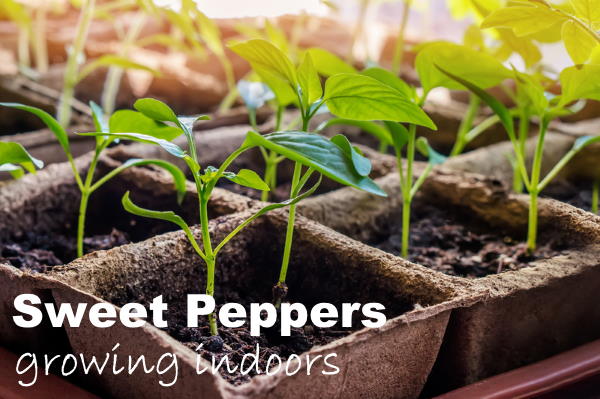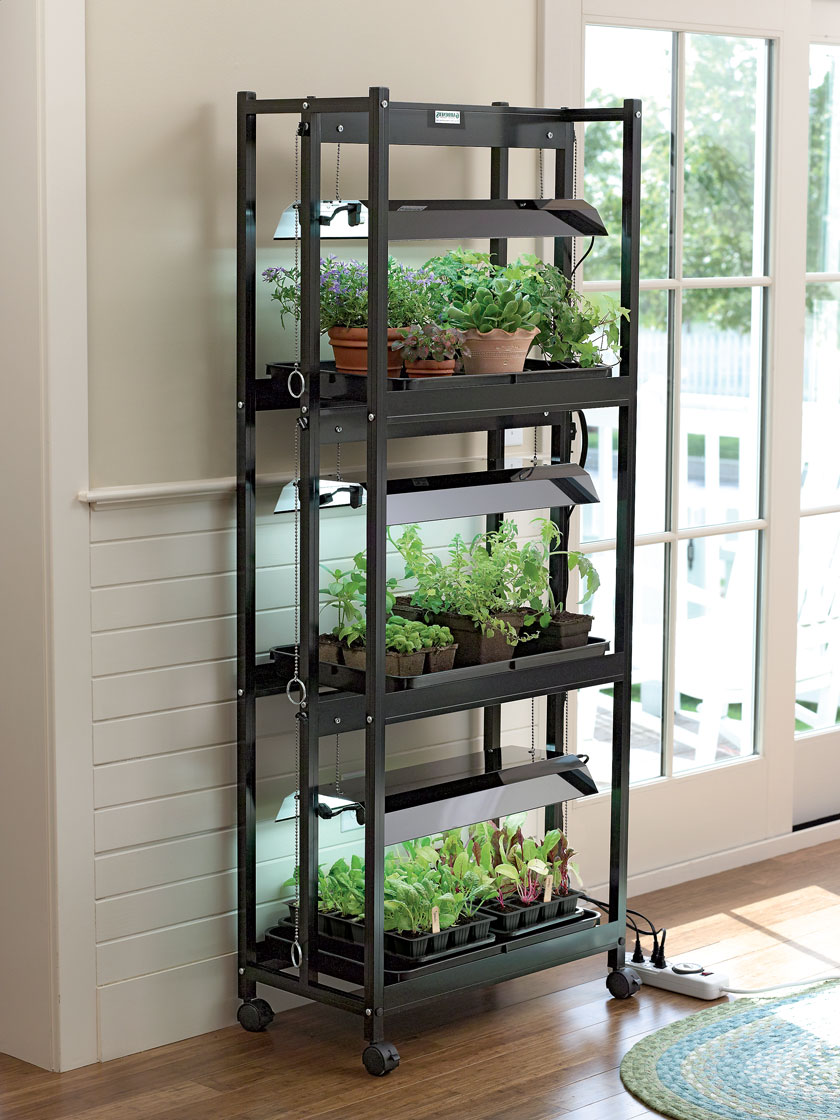Grow an Indoor Vegetable Garden
If you're short on space or don't have an outdoor plot to call your own, you can grow an indoor vegetable garden.
Some people believe growing vegetables indoors is a lot of work. Sure, you need to provide the light and water. However, you don't have to worry about frost, weeds, strong wind and the many critters that want to make a snack out of your veggies.
Disclosure: Guide-to-Houseplants.com participates in affiliate programs. If you make a purchase after following an affiliate link on this page, I may make a commission at no additional cost to you.
Find a Sunny Spot
Giving indoor vegetable gardens plenty of direct sunlight every day is essential. Choose a site that gets at least 6-8 hours of direct sunlight a day. The more light, the better.
A sunroom or south- or west-facing room will work if there is enough direct sunlight streaming in. Or make the most of your balcony, porch or patio by scooting your containers outdoors for the season. Rotate the container every couple days for even growth.
Don't have a sunlit spot? Grow lights with stands offer an efficient solution.
The light stand shown above makes it a cinch to grow vegetables, herbs and more in a compact space. Energy-saving full-spectrum lights are adjustable with pull-chains, and brighter than standard tubes. The whole process is easier than you ever imagined.
 Sweet pepper seedlings get off to a good start in a sunny window.
Sweet pepper seedlings get off to a good start in a sunny window.What to Grow in Your Indoor Vegetable Garden
Which vegetables? Make a list of what you want to grow. If you've never grown vegetables before, browse plant catalogs for ideas.
- Grow only what you and your family likes to eat and only what you need. If ten different types of leaf lettuce seems tempting, sow seeds every week or two. Succession planting will give you a continual harvest. Get tips for growing lettuce indoors.
- Consider how much space you want to give up to your indoor vegetable garden.
- Look for words such as mini, baby and patio in the plant names. These are small vegetable varieties bred to produce well in tight spots, such as containers. 'Summer Baby Bibb' and 'Little Gem' are two lettuce varieties that will do well in a small space. Growing tomatoes indoors is easy if you can provide enough light. Look for patio or cherry tomatoes. Chili peppers and spinach also grow well.
Caring for Your Indoor Garden
Water. Growing vegetables are thirsty. And an indoor vegetable garden is completely dependent on you to provide the moisture plants need to develop. Unlike most house plants that are grown in indirect light, your veggies and herbs are growing quickly under lights or in full sunlight all day. Check on them every day.
Feed. Use an organic fertilizer, such as this organic tomato, vegetable & herb fertilizer to boost healthy growth. Don't fertilize seedlings until they grow 2 pairs of true leaves because the nitrogen can burn their foliage. If you use inorganic fertilizer, take care not to get it directly on the plant, which can cause fertilizer burn and may be harmful if consumed. In my opinion, organic fertilizers are much safer to use on vegetables. Whether you choose organic or inorganic fertilizers, follow package directions for use.
Harvest ripe veggies. This may sound like a no-brainer. But even if you don't use all the vegetables, pick them anyway to encourage more production. Most vegetables will stop producing if the plant is allowed to go to seed.



